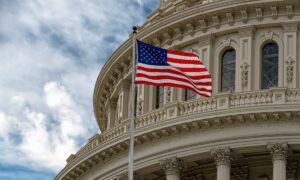How Financial Regulation Affects Investors

A common public perception is that aspects of the financial sector are corrupt. And while films such as “The Wolf of Wall Street” and movements such as Occupy Wall Street have reinforced this view, there are also broader historical events that have given Wall Street a bad reputation.
The downfall of Silicon Valley Bank in March is one of the most notable examples of a liquidity-induced banking crisis in U.S. history – an event that resulted in the bank’s bankruptcy and fear of a broader market collapse. Greg Feldberg, director of research for the Yale Program of Financial Stability, attributes the failure in part to a 2019 “tailoring” rule under which banks with $50 billion to $250 billion in assets were no longer subject to certain liquidity standards.
On the securities side, the collapse of FTX in November 2022 has since reignited debate about the extent to which cryptocurrencies should be regulated. Debate over whether cryptocurrencies count as securities continues to stir up markets and can have major effects on crypto investors.
At the same time, not all failures in the financial system have been due to outright fraud. Honest ignorance and faulty risk management have often been the culprits of disastrous financial events. This article looks at a few historical failures on Wall Street and the regulations created to address risky, unfair or deceptive practices. It also examines how regulation is evolving in the banking and crypto industries.
1929 Stock Market Crash and the SEC
On Oct. 24, 1929, the American stock market crashed. A record 12.9 million shares were traded as investors unloaded overpriced shares in an event now known as Black Thursday. Vast amounts of wealth were wiped from the balance sheets of investors and firms alike, and banks that had engaged in speculative investing with their assets soon became insolvent and unable to pay their depositors.
In response to this catastrophic event that marked the beginning of the Great Depression, the Glass-Steagall Act of 1933 was signed into law by President Franklin Delano Roosevelt on June 16 of that year as part of the New Deal.
Notably, the Glass-Steagall Act separated commercial and investment banking and created the Federal Deposit Insurance Corp., or FDIC. Investment banks were prohibited from accepting deposits. Commercial banks, in an effort to protect depositors, were prohibited from engaging in speculative investment activities such as transacting non-investment-grade and non-governmental securities.
Another piece of substantial legislation that was passed in the wake of the 1929 stock market crash was the Securities Exchange Act of 1934, which formed the Securities and Exchange Commission and required companies to follow specific requirements to be listed on an exchange. The SEC was initially tasked with regulating securities trading in the secondary market and was later given more expansive roles that included its authority to regulate the primary market and the initial issuance of securities. The SEC’s mission, as described on its website, is threefold: “to protect investors, maintain fair, orderly, and efficient markets, and facilitate capital formation.”
More recently, parts of the Glass-Steagall Act were repealed under President Bill Clinton in 1999 in the Gramm-Leach-Bliley Act. The repeal freed commercial banks to offer more financial services, such as investing and insurance.
Corporate Corruption After the Dot-Com Bubble
The early 2000s were fraught with headline-breaking financial fraud. From Enron and WorldCom deliberately misrepresenting their profitability through overly complicated and fraudulent accounting practices to executives at Tyco outright stealing money from the corporation, it soon became clear that accounting practices needed more scrupulous regulation.
The Sarbanes-Oxley Act, signed into law on July 30, 2002, by President George W. Bush, aimed to do just that. Top-level corporate officers were made responsible for ensuring the accuracy of their company’s financial statements, with harsh penalties such as jail time hovering as a threat for bad apples. The act also established more stringent reporting requirements for accounting practices and took measures to ensure that conflicts of interest would not arise between accounting firms and their clients, such as by preventing auditing companies from also providing consulting services for a given client.
The Great Recession
Immortalized by movies such as “The Big Short” and “Margin Call,” the Great Recession is still fresh in the minds of many Americans as the biggest financial disaster of the 21st century. The crisis, which saw household names like Bear Stearns and Lehman Brothers evaporate, started from risky creditors taking out vast quantities of low-interest-rate mortgages from banks. A series of secondary markets for these loans known as “subprime mortgages” sprung up, with hedge funds engaging in bets such as credit default swaps and banks selling collateralized debt obligations. With Wall Street so intertwined with the housing market, when the housing bubble eventually crashed, trillions of dollars of wealth were quickly wiped out.
In response to the crisis, President Barack Obama signed the Dodd-Frank Act on July 21, 2010, after calling for a “sweeping overhaul of the United States financial regulatory system, a transformation on a scale not seen since the reforms that followed the Great Depression.”
The Dodd-Frank Act, echoing the Glass-Steagall Act, placed restrictions on banks from trading their own funds. It increased transparency through scrutiny of the financial dealings and health of banks, created tighter regulation on risky financial products like derivatives and set up the Consumer Financial Protection Bureau.
Effects of Banking Regulation on Investors
Financial regulation on banks includes requirements such as higher minimum capital ratios that place more responsibility on banks to maintain a financial safety margin. But how do those rules actually affect investors? To start off the discussion, here are two key terms that are sometimes mistaken for one another:
Liquidity is a firm’s access to cash or cash-like liquid assets that allow it to pay off its short-term debts. Having sufficient liquidity means that banks have enough cash to pay off depositors who make withdrawals, although it also refers to the ability to cover expenses such as payroll and building maintenance.
Solvency is a bank’s ability to pay off its long-term liabilities. Solvency is a broader measure of a company’s financial health and means that if a bank’s assets were liquidated and turned into cash, debts could be paid off.
The Bank for International Settlements, or BIS, keeps a public repository of studies on bank regulation effects known as the Financial Regulation Assessment: Meta Exercise, or FRAME. From this data, the BIS notes three primary effects of financial regulation in the form of capital maintenance requirements:
When regulation hits banks, an investor in an affected bank should not necessarily reduce their projected price for the bank’s stock in the belief that the bank’s borrowing costs will increase and thus profitability will decrease. This is because higher capital ratios as a result of financial regulation have little effect on the weighted average cost of capital, or WACC, of banks. The WACC is often used as a discount rate in valuation models for stocks, so as it increases, the value of the analyzed stock decreases in the model.
Regulation that requires higher capital ratios tends to increase an affected bank’s loan rate. For people who leverage their investments, such as when taking out a loan for a mortgage, this means that regulation does have a substantial effect on the cost of financing.
When financial regulation is enacted, it is important to understand what type of capital ratio is required by the regulation. For instance, regulation that requires a certain liquidity ratio will have a different effect from regulation that requires a certain solvency ratio because the former tries to ensure that depositors have ready access to their funds while the latter aims at avoiding bankruptcy and allowing the bank to pay its investors.
From another more specific perspective, let’s consider financial regulation requiring a bank to maintain a certain amount of hedging for its investments in the form of assets that cover its liabilities. This requirement might take the form of a ratio such as the current ratio, which is current assets divided by current liabilities, and which would be classified as a liquidity ratio. As an example, regulators might say that a bank must have a current ratio of 1.33, meaning that it must have $1.33 in liquid assets for every $1 it has in short-term liabilities. In that case, capital ratios will have significant effects on a bank’s operations.
With this in mind, the third finding of the FRAME is that different ratios, when used in policy, have different effects on countercyclical bank lending (the bank lends more in tough times and less in good times) than others. In the case of the data, a ratio known as the “stable funding ratio” was found to have a stronger countercyclical effect on bank lending than the capital ratio and the liquidity ratio.
One takeaway from the FRAME data is that if a banking regulation is written in terms of a higher minimum stable funding ratio as opposed to a higher minimum capital or liquidity ratio, you can potentially expect less volatility in the share price of the bank but also lesser potential for returns. That’s because the bank will essentially be pigeonholed into providing more consistent lending and will be unable to inflate its loan portfolio substantially during periods of economic growth.
The SEC’s Role in Crypto Markets
While the SEC has traditionally overseen securities markets, new trends in digital currencies have tested its ability to protect investors. SEC Chair Gary Gensler has taken a staunch stand against crypto, saying that most should be regulated as securities.
The clash can generally be described in two avenues of conflict. The first is that cryptocurrencies have traded relatively free of scrutiny compared to traditional financial markets, while having made and lost billions of dollars for investors. Without the ability to regulate the actual currencies as securities, the SEC has targeted cryptocurrency platforms such as Binance and Coinbase Global Inc. (ticker: COIN) when it views them as risky or not sufficiently transparent enough for investors.
An often-touted rule used to determine whether something is a security is known as the Howey Test, which determines whether it is an investment contract. In the SEC’s Framework for “Investment Contract” Analysis of Digital Assets, it writes: “The U.S. Supreme Court’s Howey case and subsequent case law have found that an ‘investment contract’ exists when there is the investment of money in a common enterprise with a reasonable expectation of profits to be derived from the efforts of others.”
For investors, this rule can be relevant when considering whether or not to trade a certain cryptocurrency, as certain cryptos that fit in the rule but are not classified as securities can tank after the SEC takes action. With that being said, it is often challenging to apply the Howey Test to cryptocurrencies and so safe bets are often to engage in notable cryptos that have survived, like Bitcoin (BTC).
For the second conflict, a notable example is the case of the cryptocurrency platform Kraken, which was forced to discontinue its crypto staking services and was made to pay $30 million in fines when the SEC charged it with failing to register the staking services as securities. Gensler commented, “Whether it’s through staking-as-a-service, lending, or other means, crypto intermediaries, when offering investment contracts in exchange for investors’ tokens, need to provide the proper disclosures and safeguards required by our securities laws.” Investors in Kraken based in the U.S. promptly lost their ability to stake after the ruling.
The takeaway is that it’s usually good to understand how your crypto investments work and to look for disclosures, as a lack of transparency can indicate that a platform could run afoul of the SEC.
The world of crypto is quite complex, but investors can take general steps to try to protect their investments in line with SEC regulations. That being said, capital regulations are still important in the realm of crypto, as evidenced by events like the fall of FTX, attributable in part to a liquidity crisis.
Are Regulators Doing Too Much?
Wall Street may have a tainted reputation in the public eye, and voters might want their legislators to restrict markets as much as possible, but the reality is that restricting Wall Street too much can sometimes hurt consumers. Finding the right balance, however, is a constant cat-and-mouse game.
One current proposal to revamp capital rules in large U.S. financial institutions is known as the Basel III Endgame issued by the Federal Reserve, the FDIC and the Office of the Comptroller of the Currency. The proposed rules would force banks to change their capital allocation strategies.
In response to the proposed legislation, JPMorgan Chase & Co. (JPM) Chief Financial Officer Jeremy Barnum described how increasing capital ratios on banks can actually result in banks simply raising the prices of loans for consumers and, if this strategy proves unprofitable, simply ceasing to provide the service.
“If the repricing is not successful, then in some cases, we will have to remix and that means getting out of certain products and services,” Barnum told a Wells Fargo analyst.
The void left by large commercial banks that exit a previously competitive mortgage selling market could then be filled up by other institutions. “This is great news for hedge funds, private equity, private credit,” says JPMorgan Chase CEO Jamie Dimon. Those businesses generally face lower federal scrutiny than banks.
On the other hand, FDIC Chair Martin J. Gruenberg believes that Basel III Endgame is necessary because of the “genuine financial stability risks” that larger banks pose. Gruenberg writes, “Community banks, which are subject to different capital requirements, would not be impacted by the proposal, given their limited overall size and trading activities.”
Ultimately, there is no clear answer on the potential outcome of Basel III Endgame. If it is enacted, the positive case would be that smaller banks can step into the role that larger banks currently play as loan makers and deposit holders without individually becoming “too big to fail.” On the other hand, Basel III Endgame could drive up consumer prices and drive out larger lenders who might be replaced with just-as-large but less-scrutinized institutions.
Takeaways
Financial regulation is a tricky line to tread. Wall Street has shown in the past that it can act irresponsibly, whether by virtue of greed or honest ignorance. Financial regulation faces a wide range of issues, including whether certain capital ratio formulations will be effective. This is a deceivingly difficult task.
At the same time, it’s vital that legislation is practical with regard to the benefits it offers consumers. After all, it makes little sense to impose regulations on banks in the name of consumer protection if those rules wind up hurting consumers (by discouraging financial firms from issuing loans, for example).
History has shown, though, that financial regulation is undoubtedly necessary, as the repercussions of a banking system run amok go far beyond consumers’ inability to withdraw funds.
Source link
#Financial #Regulation #Affects #Investors




